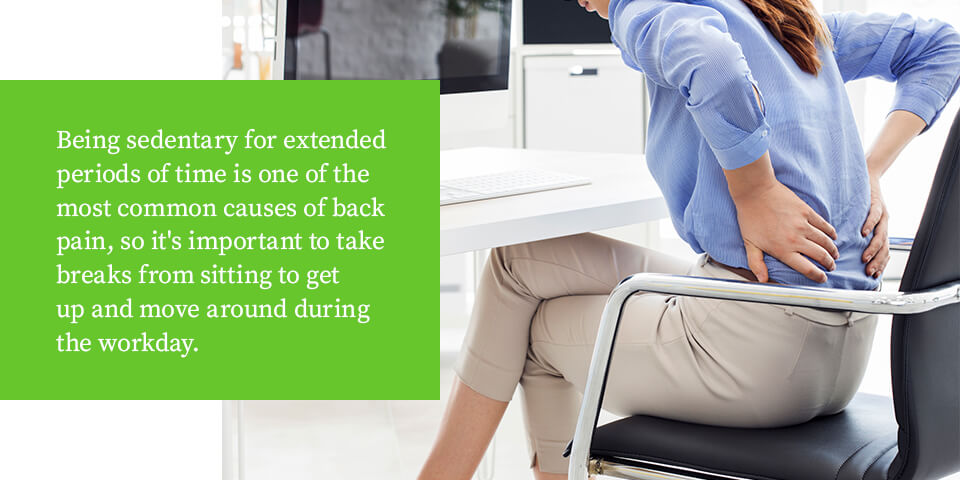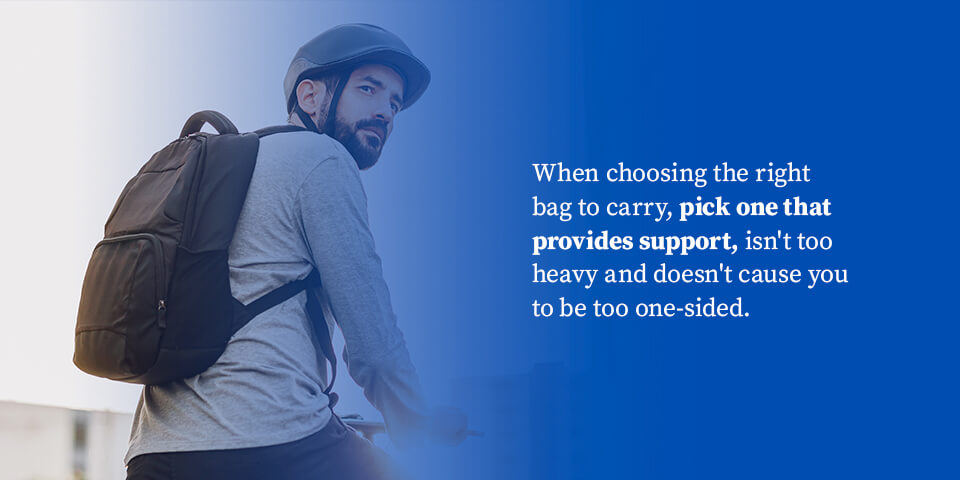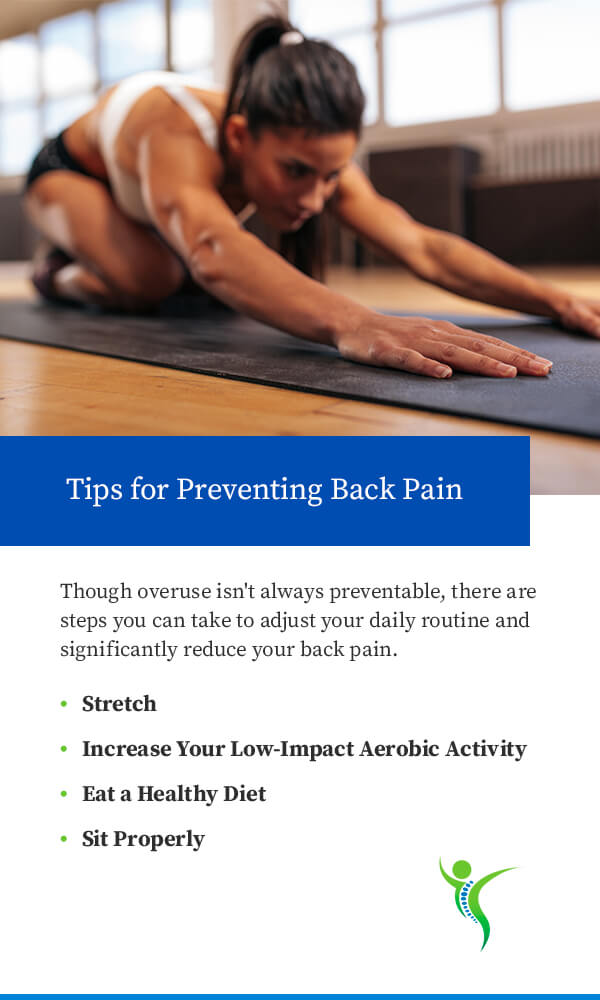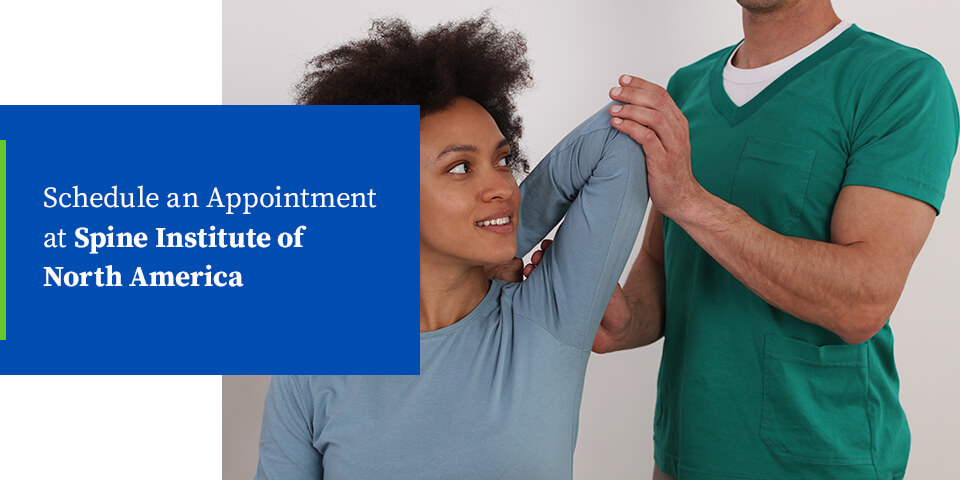6 Unexpected Home Accessories Responsible for Your Back Pain
While back pain is common in the United States, many Americans are unaware that ordinary home accessories can be the cause of it. There are varying levels of back pain, and severe cases may require the help of a spine specialist. If you’re experiencing back pain but aren’t sure what’s causing it, you can take a look at the following list of things that cause back pain in everyday life to try and pinpoint the source.
Everyday Items That Can Cause Back Pain
Typically, back pain is caused by wear and tear or overuse rather than an isolated incident. Many items you use on a day-to-day basis can be the culprit of your back pain, so it’s essential to be aware of them and how you can use them differently to mitigate your pain. Below are everyday things that cause back pain.
1. Office Chairs
A possibly surprising yet common culprit of back pain is the office chair. While an uncomfortable office chair could be causing back pain, even sitting in an ergonomic chair for extended periods of time every day can have negative effects.
Whether you have an office job or work from home, you can reduce the back pain caused by sitting for hours a day. Being sedentary for extended periods of time is one of the most common causes of back pain, so it’s important to take breaks from sitting to get up and move around during the workday. Standing puts far less pressure on your spine, so do stretches and go for short walks regularly to alleviate the pressure sitting puts on your spine.
For busy days when taking regular breaks or stretching isn’t possible, invest in a chair that will support your back and won’t require you to hunch over.
2. Back Pocket Wallets
Though sitting on your wallet may seem too minor to cause you any pain, doing so for prolonged periods of time can actually lead to poor posture. When you sit on your wallet, you twist your hip and compress the spine, causing you to sit with an unbalanced posture. As a result, your back pocket wallet can cause back pain and harm your spine. Continuing to sit on your wallet can even lead to chronic lower back pain.
3. Sandals
Flat shoes can cause back pain. Sandals, flip flops and other light or flat footwear don’t offer great support and can lead to lower back problems. When we walk around, our bodies require arch support that light footwear doesn’t offer.
Along with lower back pain, improper footwear can increase pain in the hips and knees due to the biochemical abnormalities that compound and worsen in the feet when we wear flat or light shoes. The additional stress on your lower back, hips and knees can result in the degeneration of the intervertebral discs.
As such, you may want to limit your use of flat or light footwear and opt for shoes that offer arch support. The best shoes to wear for preventing lower back pain are properly fitted athletic shoes. Select footwear based on the arch of your foot. For example, if you have flat feet, choose shoes that provide sufficient arch support to prevent back pain.
Keep an eye on the details of your footwear, as well. An ankle strap, for instance, can be the difference between experiencing back pain and being pain-free. If it’s in your budget, your best option may be purchasing custom shoes. A podiatrist can order customized shoes based on your exact needs.
Fortunately, you don’t have to completely do away with wearing sandals in the summer. As long as you find flip-flops that are sturdy, come with an ankle strap and don’t bend in the middle, you can enjoy greater stability while walking and prevent back pain.
4. High Heels
On the other end of the shoe spectrum, wearing heels can also cause back pain, as they change the way that you stand. Though you may love your heels, you may want to leave them in the closet to avoid back pain. When you wear high heels, your back arches, straining your spinal muscles and forcing them to work in overdrive.
High heels also put your feet at an angle and pull your joints and muscles out of alignment, leading to issues and pain throughout the body. If you notice shoulder and neck pain on top of your back pain, your high heels may be the problem.
Trade your high heels for sneakers and footwear that properly support your foot’s arch. However, if you must wear high heels, follow these tips:
- Find a platform sole that decreases the angle between the ball of your foot and the heel to distribute your weight across your entire foot.
- Invest in gel inserts that can provide relief and more stability.
- Avoid narrow, pointy heels, as these squeeze your toes and lead to pain.
- Choose a thicker heel to distribute your weight more evenly and lower the risk of a sprained ankle.
- Find a pair of high heels that fit snugly and keep your feet firmly in place.
You can also prevent pain and injuries from wearing high heels by regularly stretching your calves and plantar fascia. Your calves are attached to your hamstrings, which are connected to your pelvis and lower back. By stretching these areas, you can loosen your hamstrings and alleviate back pain. This is especially important after spending long periods of time in heels.
5. Backpacks
Backpack use doesn’t stop after school. If you use a heavy backpack on a regular basis, this could be causing your back pain. Backpacks and other bags can cause back pain if they are too heavy, offer no support or cause you to carry things on one side. Even backpack and laptop bags that are made ergonomically aren’t totally safe. When you carry heavy items on your back, you increase muscle fatigue and lumbar disk compression, which can lead to lower back pain.
For kids, backpacks should never weigh more than 20% of their body weight. The same rule of thumb can be applied to college-aged adults. Follow the tips below to carry your bag safely and prevent back pain:
- Wear both straps.
- Use proper posture.
- Pack only the necessities.
- Use digital books if available.
- Use a chest or waist strap if available.
- Bend at the knees when you lift your bag.
- Place heavier items at the center of your back.
- Make more than one trip if you have multiple heavy objects.
- Adjust the straps so the weight of the bag is distributed evenly.
- Use available storage at work to avoid carrying every needed item at once.
When choosing the right bag to carry, pick one that provides support, isn’t too heavy and doesn’t cause you to be too one-sided. Even with a high-quality bag, you may want to stretch the muscles in your shoulders, back, neck and chest every day to avoid stiff muscles and backpack back pain.
6. Mattresses
There are many reasons a mattress could be causing back pain, such as poor sleep position or an old model. When you sleep in a poor position, you can develop back pain that could become more severe if you don’t change your mattress or how you sleep. People who sleep on their stomachs are more likely to develop lower back pain, so if you sleep on your stomach, you may want to start sleeping on your side instead.
The following are signs that your mattress may be causing your back pain:
- You wake up in pain: If you wake up and immediately have back pain, you might want to consider replacing your mattress.
- Your mattress is old: If you purchased your mattress several years ago, it may be time to buy a new one.
- Your mattress is new: A brand new mattress can take some time to adjust to, so it’s normal to experience some back discomfort while you adapt to the change.
- You don’t sleep well: Do you toss and turn all night? If your mattress is uncomfortable, it could be the cause of your poor night’s sleep and your back pain. Similarly, if you notice you’re always tired, it may be a sign you’re not sleeping well because of a poor mattress.
- Your mattress is lumpy: A lumpy, uneven mattress can lead to chronic back pain. Watch out for sagging, particularly in the middle of your mattress, as this can be detrimental to your spine health.
- You sink in the mattress: Your spine should maintain a neutral position when you lay on your mattress. If this isn’t the case, your mattress may be causing your back pain.
Try a mattress with a medium firmness or place a pillow under your stomach or between your knees to relieve pressure on your back. Purchasing a new mattress or using a pillow can decrease your back pain and improve the quality of your sleep.
Anything That Requires Repetitive Motion or Strain Can Cause Back Pain
Any everyday items or activities that require repetitive motion related to the back or things that require great strain can cause back pain if done improperly or in excess. Similarly, improper lifting techniques can also cause back pain. Common activities that lead to back pain include:
- Cleaning: Though cleaning may seem like a simple, low-impact task, certain activities can actually lead to back pain. When you bend frequently, move heavy clothes from the washer to the dryer and mop or sweep the floors, you put stress on your lower back, which can lead to lower back pain.
- Improper exercise: Exercise is vital to your overall health and well-being. However, exercising improperly can lead to severe issues and pain. This is particularly true when you’re already experiencing back pain. Certain exercises like extensive, daily weightlifting can make your pain worse. Non-contact sports like golf can also create tension between your upper and lower body and cause joint and muscle pain. Discuss exercise with a health professional to identify the best and safest physical activity for you.
- Lack of exercise: Along with exercising the wrong way, not exercising at all or enough often leads to back pain. A common myth is that the best remedy for back pain is rest. Though rest is important for physical and mental health, when you avoid physical activity entirely, you put your lower back at a much greater risk. Rest should follow physical activity to keep your body from being tight and rigid, especially when you already dealing with back pain.
Tips for Preventing Back Pain
Back pain can be painful and debilitating, but almost all cases are improved without surgery. Though overuse isn’t always preventable, there are steps you can take to adjust your daily routine and significantly reduce your back pain.
Stretch
Alleviating and preventing back pain may be as simple as stretching throughout the day. Yoga and low-impact exercises can prevent back pain by keeping your joints limber and preventing excess weight. Yoga promotes muscle relaxation and physical strength and encourages mindfulness and deep breathing that can reduce your stress. If you attend a yoga class, ask the instructor to adjust specific poses so you can target your lower back.
Increase Your Low-Impact Aerobic Activity
Whether you’re sitting in a chair or a car, being stationary for long periods of time may have a negative impact on your spine. One of the simplest solutions is taking breaks to walk around. Walking is a low-impact aerobic activity, meaning it doesn’t strain your back. Swimming is another example of a low-impact aerobic activity, so choose your preferred activity and discuss your options with your doctor.
Eat a Healthy Diet
Too often, we don’t associate physical health with our diet, but eating a healthy diet can actually prevent or ease back pain. Foods that cause inflammation are common culprits of back pain, so you may want to try eliminating sugar, caffeine, processed foods and alcohol from your diet. Introduce more vegetables, fruit, grains and lean proteins into your diet to decrease inflammation.
Sit Properly
Though you want to limit the amount of time you spend sitting, you can’t avoid it entirely. Most of us sit to eat, watch TV with our families and drive to and from work. Therefore, it’s important to sit with the proper posture when you do have to be stationary.
Slumping in your seat, hunching over your steering wheel or sitting with your legs bent beneath you can put unnecessary pressure on your back muscles and spine. Instead, sit upright and consider investing in a supportive lumbar pillow that can ease your pain.
Contact Spine INA
At Spine INA, our spine specialists provide an environment of honesty and concern to address your pain. We collectively formulate a care path to address and alleviate your back pain in a customized way. Our physicians are experts in the field, so we can offer you the least invasive spine procedures with minuscule incisions so that you can resume daily life activities with a short recovery time.
If you have been having back pain due to your daily activities, contact us at Spine INA and schedule an appointment for your initial consultation.













